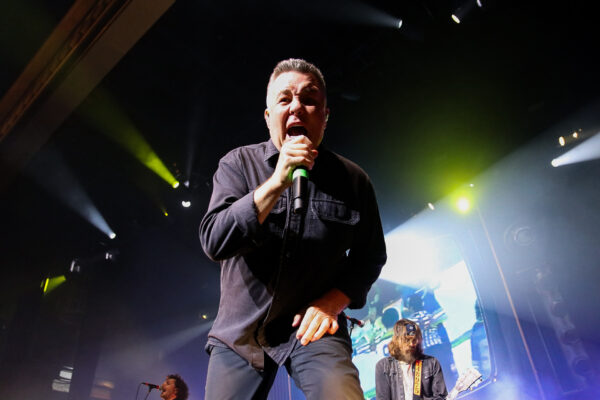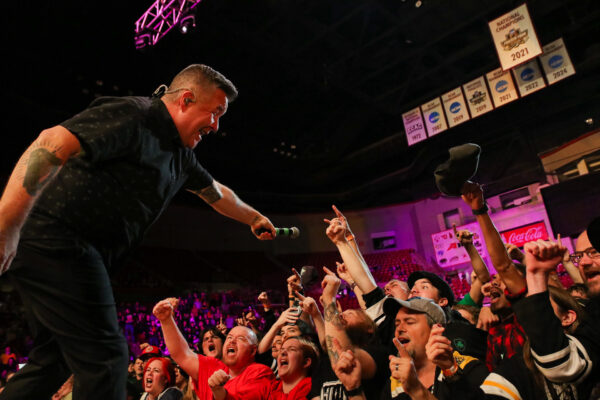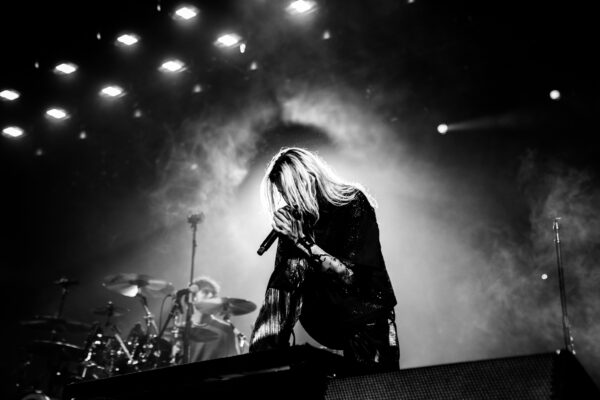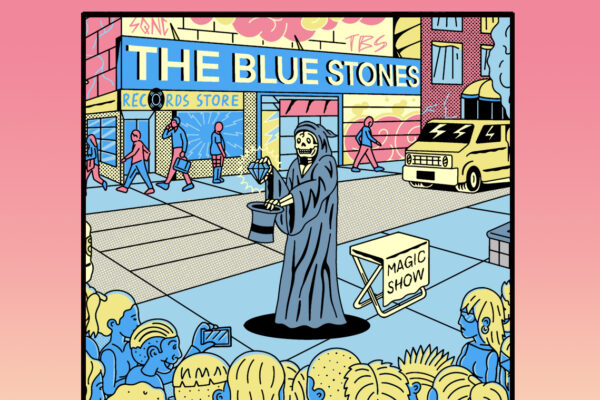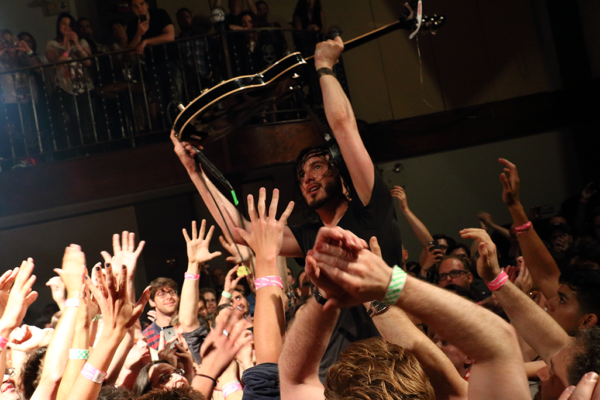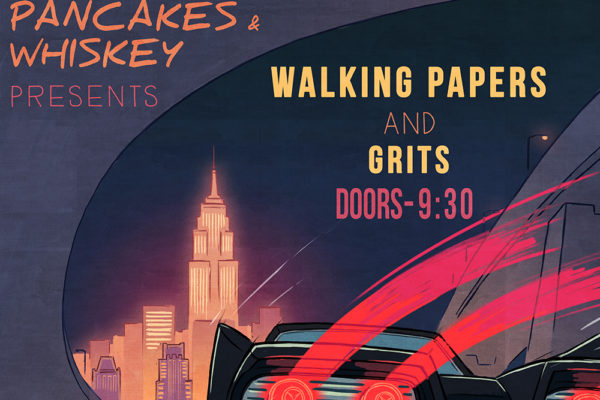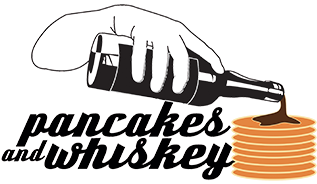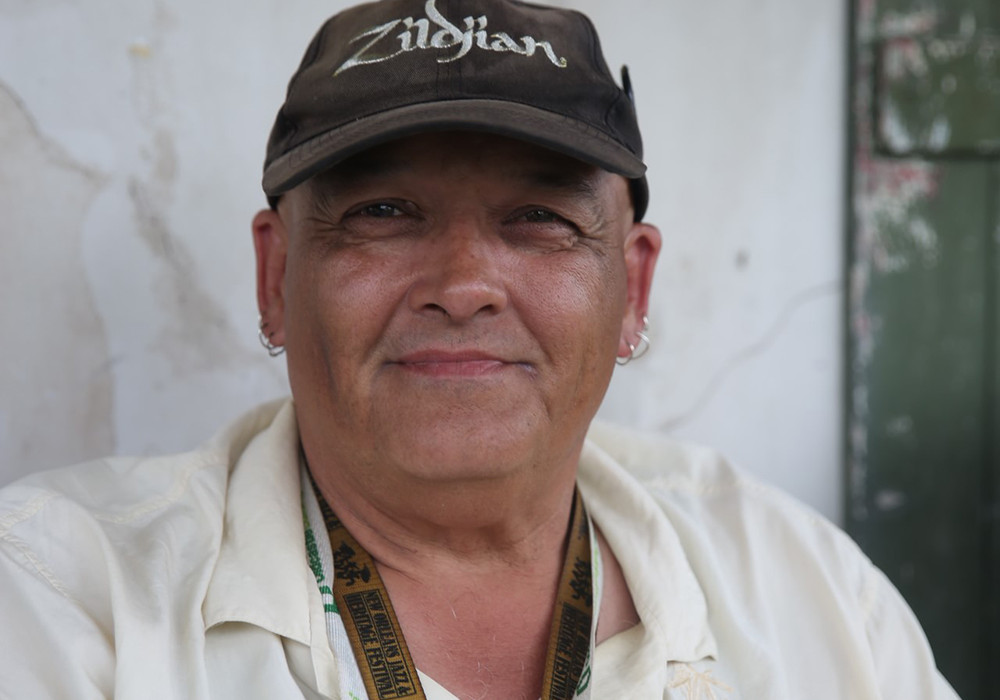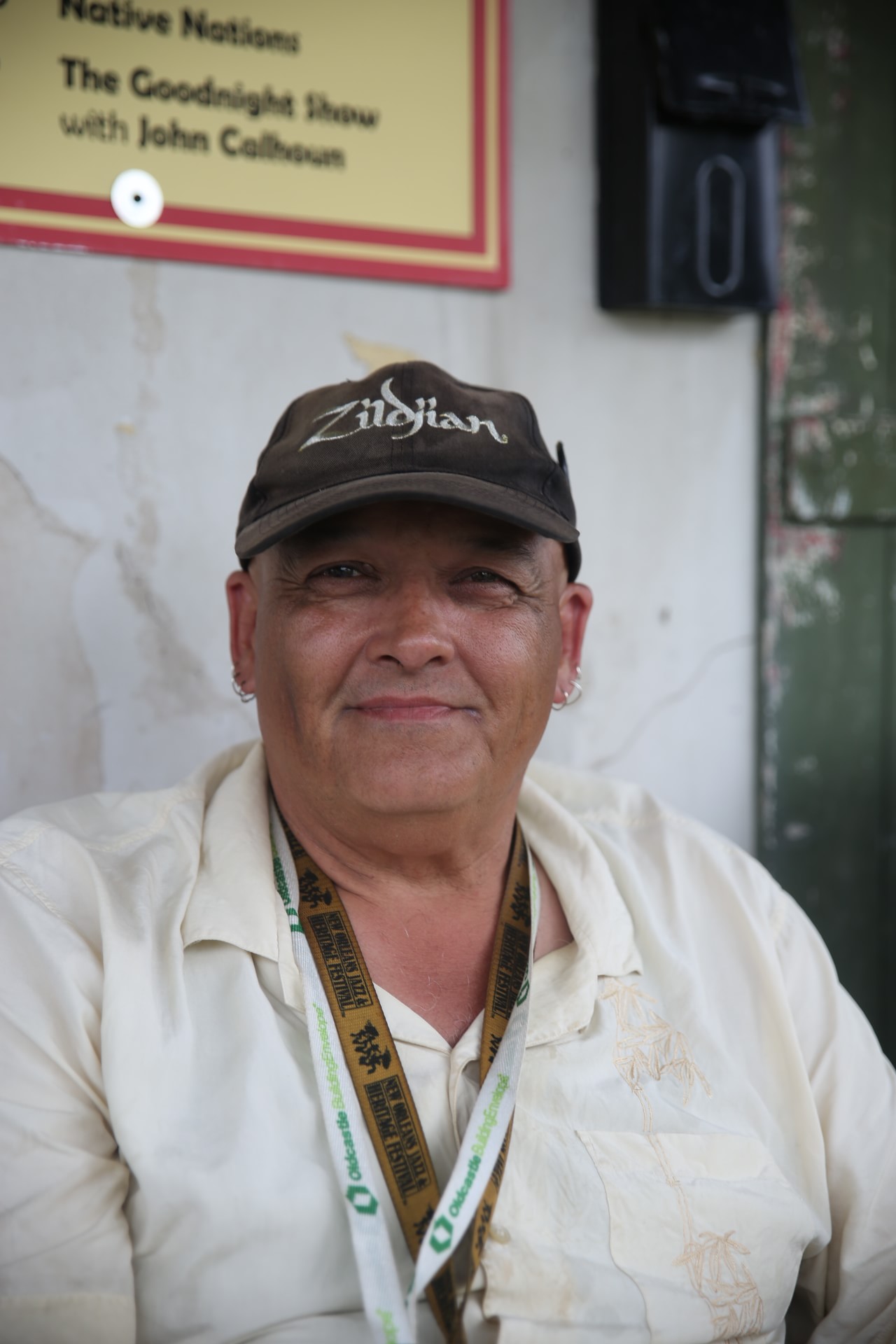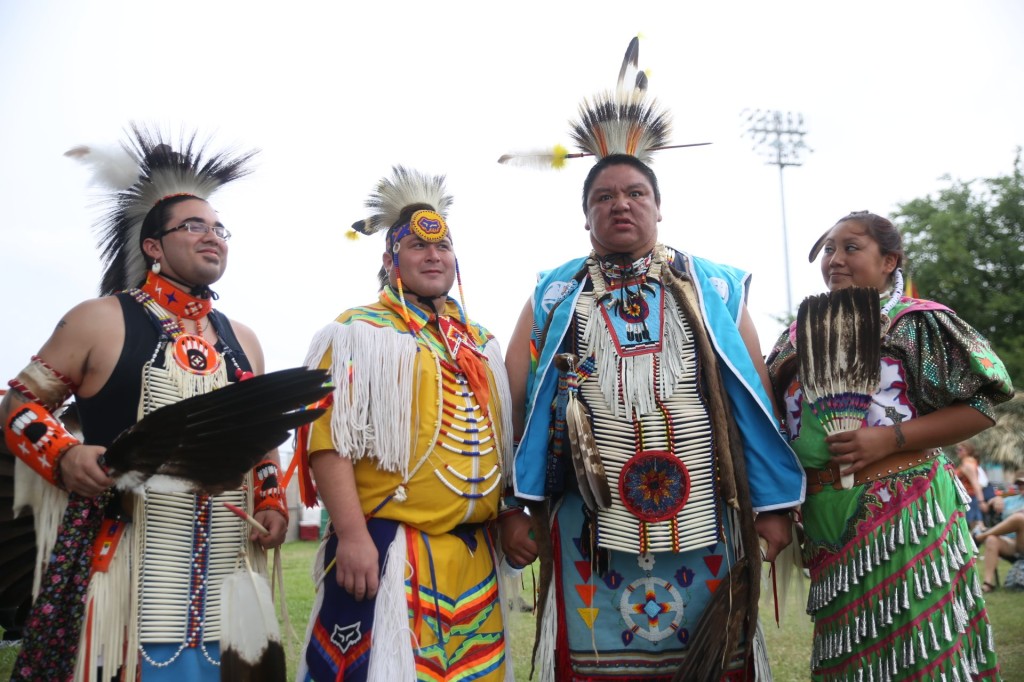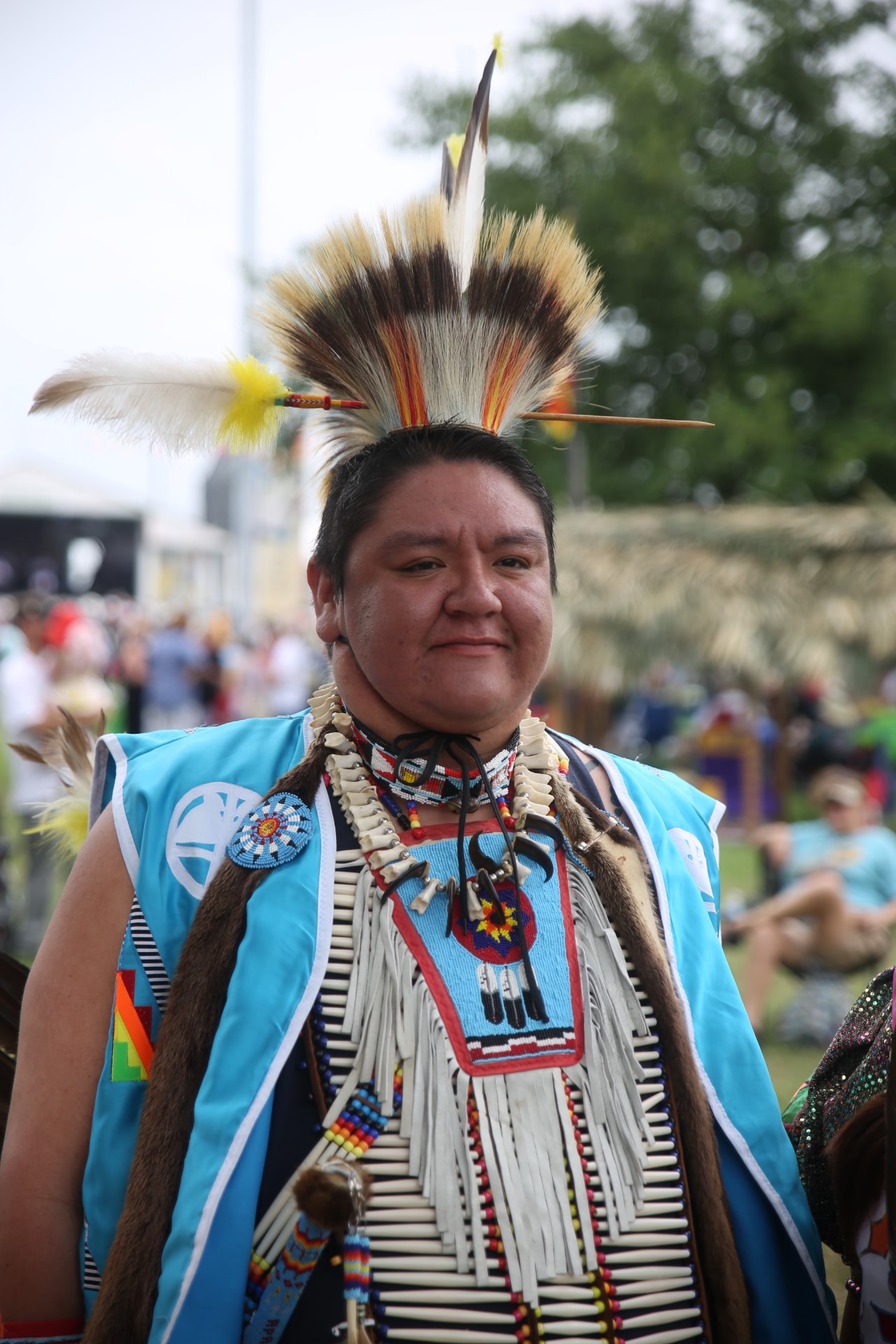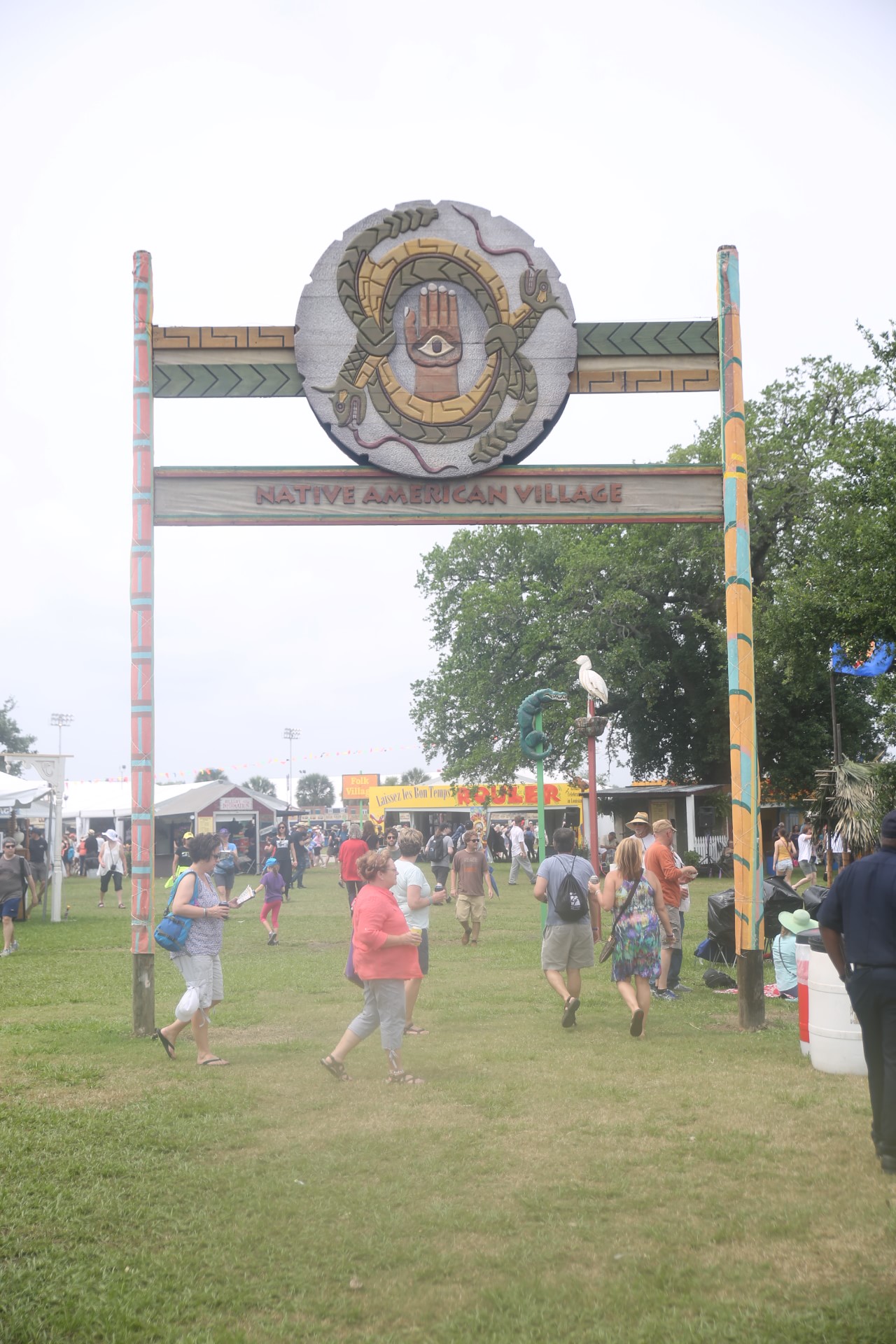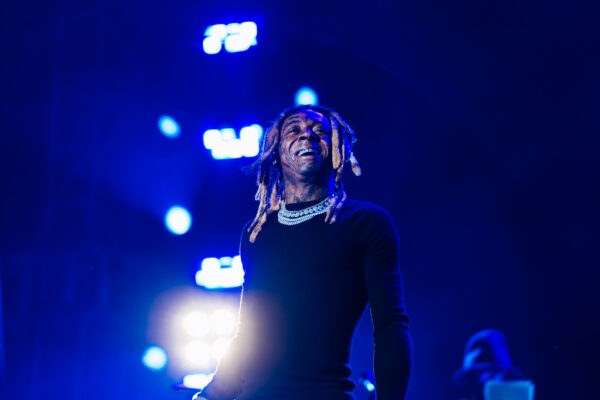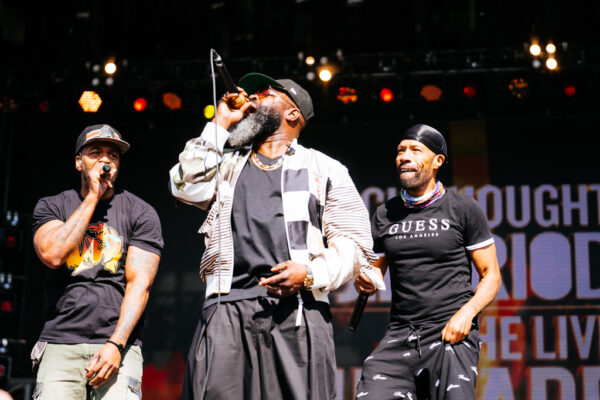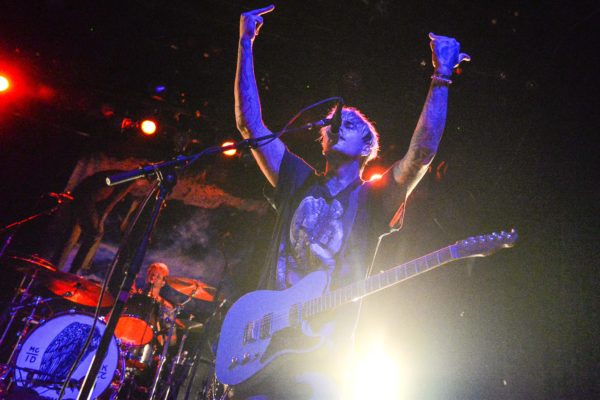Local legendary musician Grayhawk Perkins, talks about Native American music, it’s influence, and how important it’s been to the evolution of the Crescent city sound.
How has Native American music influenced other styles of music?
Our music is very traditional; it’s based a lot in call and answer, like a dialogue. And you can hear that in the rock and Jazz that began out of here, and it’s evolved out of there.
How would we be able to hear more of the Native music in the cities venues?
As far as Native music you’re not going to hear it, you’re gonna hear what I call watered down or a non-native that they call native – I’m probably one of the few that come in to perform, the artists that you see that come in for Jazz fest, they usually come in from other places. For some reason in New Orleans other cultures are accepted more than traditional Native American, which is sad considering we were the first people here. So you don’t see many Native Americans here.
So Jazz fest was the first in the mainstream to bring that culture in the modern day to New Orleans, which is what we try to do – bring pure Native American music. The music is very earth, very spiritual and sacred and not as flashy, and people tend to go for the flashy. But when we do bring in the traditional performers people have a tendency to like it, it’s different, it’s something they’ve never seen before so that’s we do, we show it to people who’ve never seen a traditional dance, it’s down to earth.
The landscape has changed music with Delta Blues, Zydeco etc. how has the landscape changed your music?
Well it depends, I come from one community and other musicians I know were forced to move to other areas – not just cause of land, but because of prejudice and doing that now you see Native Americans living in a community their not used to which may have a Creole or Zydeco influence. You’ll seem playing Zydeco because they wind up moving towards there – years ago we were our own isolated community and that’s what you were going to hear and now that we have economics, and land change, and the things that have happened over the last hundred years you have that exchange of food, traditions, language and of course music.
What about the evolution of the music from this area?
I myself have grown up around traditional singers, but growing up in new Orleans you do see that funk, you see that blues music. When asked who my influences are, I’m a native American but a Native American who grew up in the 20th Century so you can also see The Rolling Stones in my music, Jethro Tull, Yes and things like that. That’s what music in America and New Orleans is about, it picks up everything. It is reflective of our music as a whole, it’s very hard to keep it pure. There are some purists but it’s all a mix, we influence and are influenced.
Rachel Ornelas who organizes the works of the Native American artists talks about the cultural representation at the fest, and the city at large
How did the Folklife Village begin at the Jazz Fest?
It started at the very beginning very much influenced by artist tents. Native American, Coushatta, Homer Indian basket makers come to show their wares.
How long have you had a representation here?
It was here almost as long as the festival itself, so trying to integrate new culture and ideas here.
How have the performances evolved over the years?
We used to have a separate area and after Katrina we bought it over to the Folklife Village, now we have other cultures that aren’t represented in other areas here.
As far as the area spans in terms of the native culture how far does it go? Is it New Orleans specific, is it Louisiana wide?
We highlight the Native American community within Louisiana, there are 5 federally recognized tribes here in the state and there’s about 20 tribes in the whole of Louisiana – everything that’s associated with New Orleans is affected by the native community, gumbo, the food, street names, Mardi Gras so we’ve affected the culture of New Orleans.
In such a mixed festival of music how does the Native performance sit alongside the other performances?
It’s hard integrating on the main stage, especially cause the pow wows are very interactive and rely on the audience reaction and participation which isn’t very conducive on the stage.
Where do you see it moving on to?
I envision all the old traditions cause we have the cream of the crop of Native Louisiana artists, these are incredible craftsmen. What I see which is really interesting and brings it up to the modern day is there a lot of younger people that are interested in it and put their own twist on things, so I would like to incorporate that and bring the younger apprentices up to showcase their work.
And what about the crowd reaction, from what you’ve seen?
I think people love it. We’re the heritage for the Jazz and heritage festival, and we want to keep it alive.
Article: Jacques Lang
